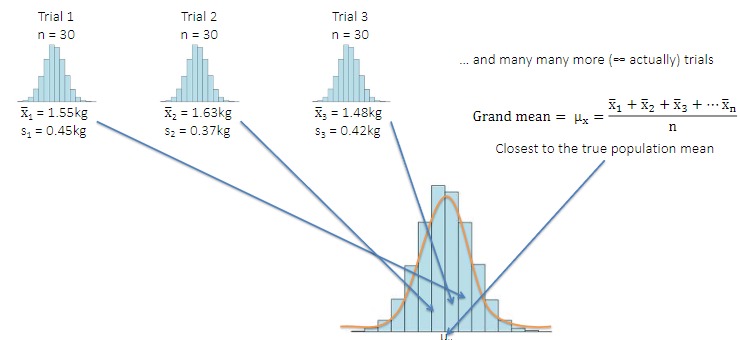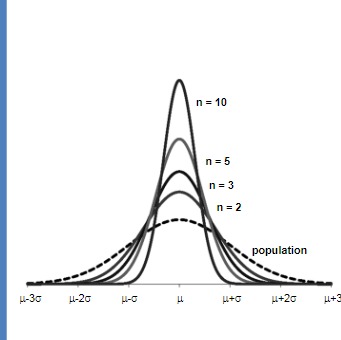Class 2 - Sampling Distribution and Central Limit Theorem
1/6
There's no tags or description
Looks like no tags are added yet.
Name | Mastery | Learn | Test | Matching | Spaced |
|---|
No study sessions yet.
7 Terms
Define: Statistical Inference
Statistical inference is reaching a conclusion about a population parameter based on information from a sample.
What are the two approaches to statistical inference?
Estimating Parameters
Testing Hypotheses
Describe: Estimating Parameters
Basic statistical inference
Two types
Point estimates: a single numerical value from a sample (e.g. sample mean) and is a “best approximation” for its corresponding population parameter (e.g. population mean)
Interval estimates: a range of values calculated from the sample and is “likely to include” the population parameter of interest (e.g. confidence intervals)
Define: The Sampling Distribution of the Mean
The mean of a representative sample is usually a good estimate for the population mean, but the mean of a sampling distribution is a better estimate of the population mean.

Describe: The Standard Error of the Mean
Another way of saying “the standard deviation of the sampling distribution”, estimates the spread of a sampling distribution
Measures how much the sample statistic varies from sample to sample
Function of sample size, the larger the sample, the smaller the standard error
S.E = σ/(sqrt: n)

Define: The Central Limit Theorem (CLT)
Given a population of any functional form (normally or non-normally distributed) with a mean μ and a standard deviation σ
The sampling distribution of sample means computed from samples of size n from the population will have mean μ and a standard deviation σ/(sqrt: n) and will be approximately normally distributed if n is sufficiently large
Can CLT be applied to skewed data?
Yes, if a sufficiently large number of samples are taken, even from skewed data, we can retrieve approximately normal distributions.